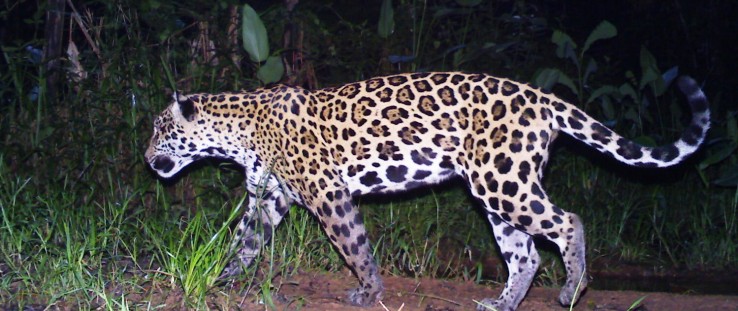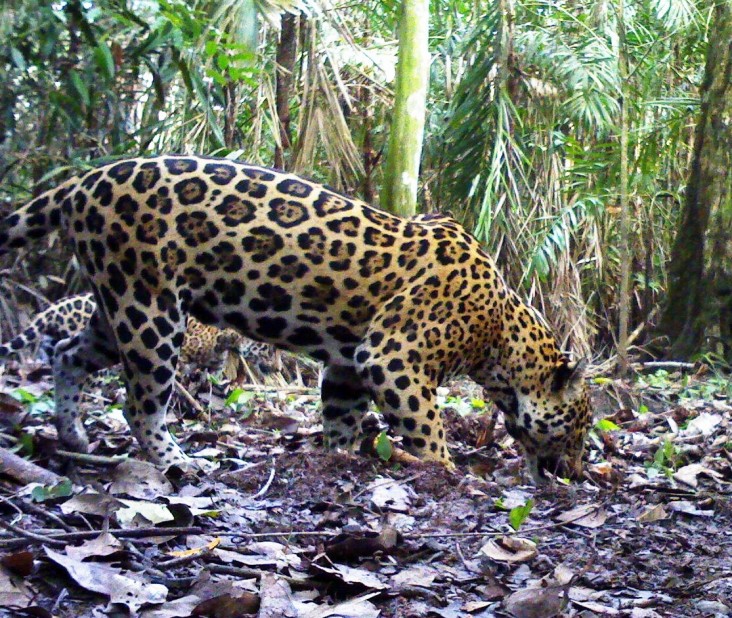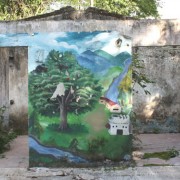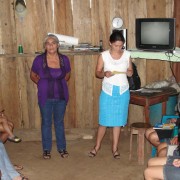 The jaguar can range across a variety of forested and open habitat, but for a variety of reasons such as the expansion of agricultural activities that harm their habitats, they have been forced to move out of those areas to survive.
Panthera Foundation
The jaguar can range across a variety of forested and open habitat, but for a variety of reasons such as the expansion of agricultural activities that harm their habitats, they have been forced to move out of those areas to survive.
Panthera Foundation
 The jaguar can range across a variety of forested and open habitat, but for a variety of reasons such as the expansion of agricultural activities that harm their habitats, they have been forced to move out of those areas to survive.
Panthera Foundation
The jaguar can range across a variety of forested and open habitat, but for a variety of reasons such as the expansion of agricultural activities that harm their habitats, they have been forced to move out of those areas to survive.
Panthera Foundation
For many years, the jaguar, the largest feline in the Western Hemisphere and endangered in Colombia, has been a serious challenge to farmer communities living in the high mountains of the Andean Range. This “king of the tropical forest,” like many large, free-ranging wildlife species, generally lives within protected areas, but for a variety of factors moves beyond those areas in search of food, shelter and, ultimately, survival.
Out of necessity, jaguars expand their search for food in the areas around farmer communities and face the threat of being killed by cattle ranchers who need to protect their livestock from this highly capable predator.
In the village of El Pesebre in the municipality of Tame, Arauca in eastern Colombia, a heightened sense of frustration was setting in with the increased number of predation cases between 2007 and 2009, which in the case of a local cattle rancher, totaled up to 22 cattle deaths.
According to Esteban Payán, a preeminent biologist and jaguar expert in Colombia, “Jaguars prefer to eat the cattle because, when trees have been felled, wild animals become rare and jaguars can no longer hunt their normal prey. They look for food on the farms and then the people have a reason to kill them.”
This conflict between jaguars and people was affecting the jaguar population and the livelihoods of cattle-ranching communities and ecosystems in and around the El Cocuy National Natural Park.
From February 2011 to August 2013, USAID’s Conservation Landscapes Program partnered with the Panthera Foundation to create what turned into an 11-mile natural pathway to protect jaguars crossing through the Andes Mountains to reach the hot plains of Tame, Arauca in eastern Colombia.
Avoiding Invasion
The first step was to identify the safest corridor area and define buffer zone boundaries. This was done by collecting information on jaguar habitat requirements, jaguar and prey locations, predominant land uses, and any future developments that could threaten the sustainability of the corridor.
Through the course of this process, the Panthera Foundation developed a stabled cattle-raising system for the participating farmers, then moved the farms out of the corridor areas, and placed wooden post electric fences to block the jaguar’s entrance into the farms. Under this system, cattle are raised in a confined space rather than having open range, which increases deforestation.
The program was also designed to help small cattle ranchers establish better land management and cattle development practices in protected area buffer zones. This component included activities such as division of pastures, establishment of a “protein bank”—an area in the farm with vegetation such as shrubs and grasses for feeding cattle—and access to solar energy systems.
By organizing the way farmers raised their cattle and moving the location of their activities to avoid invasion of the jaguar corridor, the project was able to promote the conservation of the jaguar.
USAID’s implementation of sustainable management and cattle development practices improved the use of more than 370 hectares (914 acres) in the regions covered by the project and benefited 13 farmer families. During the final phase, the project trained more than 100 cattle ranchers on planning and implementation of sustainable cattle management systems, conservation, and restoration for the conservation of wild fauna and key natural resources like soil, water and biodiversity.
“The conservation of the Jaguar corridor is one of many exercises developed under the program showing the importance of simultaneously working on livelihood and biodiversity conservation improvement to guarantee sustainability of conservation actions,” said Ximena Garcia, USAID/Colombia’s senior biodiversity adviser.
The Electric Moment
Since the implementation of this project, both cattle and jaguars have been able to coexist and ensure their survival.
“Thanks to this initiative, our pastures have improved, and we have been able to install electrical fences and learned that with smaller plots the animals have access to better food and are able to produce more,” said Jesús Caceres, a cattle rancher living near the Cocuy National Natural Park.
The seemingly simple project had also reserved some surprises for the people participating in it. Karen Pérez is one of the biologists working with cattle ranchers on fence building and tree planting to delineate the jaguar corridor. She had a eureka moment when one of the farmers’ wives asked her if it was possible to generate enough electricity to power their homes through the solar electric fences that were being built to keep out the jaguars.
“I had been blind and this woman made me see the light,” said Pérez. She worked with the solar energy technician to put in place an additional electrical installation to feed electricity to the farmers’ homes. The farmers were able to improve their cattle production systems and ensure access to solar energy in off-grid zones to address their everyday energy needs such as lighting, performing household chores and charging phones.
As she turned on the light switch, Teresa de Torres, the farmer’s wife, said: “I’m so happy this program has brought a new life for us.”
Once the first six-mile stretch of the jaguar corridor was completed, many other ranchers expressed interest in the project. In response, USAID increased the area under protection along the jaguar corridor for an additional 5 miles, and expanded the impact of the project by simultaneously promoting conservation and improving livelihoods.
Practical Reasons
Compared to the 10,500 miles that stretch from Mexico to Argentina, where jaguars once were able to roam, 11 miles may seem small. For Alan Rabinowicz, an American world expert on wild cats, these few miles are crucial land pathways to protect jaguars and other felines from extinction, as it helps them find their mates and reproduce.
“The first 6 miles established in Colombia are the pioneer experience, and, as always with pioneers, the most important lesson is that it can be done,” said Rabinowicz. “The next time we city dwellers turn on the lights in our homes, we may realize that, thanks to the light, the jaguars can still share the world with cattle, farmers and even us in distant cities.”
Finally, says Rabinowicz, “There are practical reasons for protecting jaguars, because they control other wild animals, which otherwise could be dangerous to human health. But more than that, humans need the wilderness and that is what makes us human.”
Related Links
¡Qué duro es ser felino en Colombia! (How hard it is to be a feline in Colombia), El Tiempo, Nov. 20, 2013













Comment
Make a general inquiry or suggest an improvement.